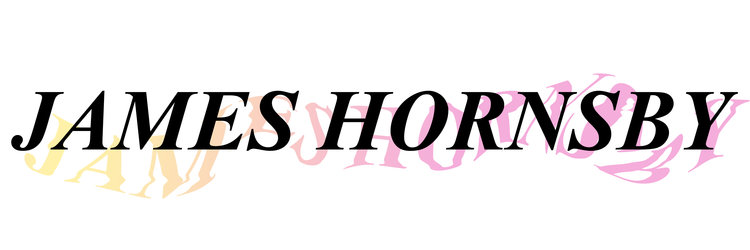The Center Cannot Hold: James Hornsby’s visual meltdown By Julia Scott Green
Don’t Get Your Hopes Up is the apt title of this new body of work by James Hornsby. His images forecast an imminent apocalypse with the manic temperament of the digital age. Hornsby’s doomsday is scored by the deafening cacophony of Cyberspace — where the panicked time signatures of Twitter updates and Instagram ‘likes’ are ceaseless and omnipresent.
Hornsby’s exhibition conjures up the haunting and cautionary voice of the late cultural theorist Mark Fisher. Best known for his brazen critique of capitalism, Fisher was a rigorous scholar of 21st Century malaise. To Fisher, the significant and well-documented1 decline of mental health in recent decades is the defining symptom of our time. In his 2013 lecture, Cyberspace-time Crisis, Fisher located communication technologies as central to this issue. Here, he outlined the ‘schizophrenic subjectivity’ of our ‘information blitz’2. He considered communication technology as a form of ‘techno-amphetamine’ which—through the immensity of information input— subsumes all time, disables us from constructing a coherent self, and leads us into a ‘radical ontological precariousness’. Hornsby’s work vividly recalls this dizzying communication catastrophe mapped by Fisher. His photographs fragment and dismember his subjects, and his barbaric digital mutilation is reminiscent of a nightmarish, drug-induced mania.
Hornsby’s work is produced through a technical and labour intensive process. Every image is carefully created in his photography studio, only to be repeatedly and unflinchingly vandalised. His weapon of choice is the digital retouching software usually relegated to the role of image correction and perfection. This ‘misuse’ of his craft subverts the slick aspirations of commercial photography and undermines the capitalist narrative that self-expression must have market value. In addition to his disruptive creative process, Hornsby summons the anarchy of the last century to really drive his message home. In “LIVE FAST, DIE YOUNG” we see direct references to the famously explosive paintings of Jean-Michel Basquiat; “BURNOUT” reimagines the alarmingly fleshy portraits of Francis Bacon; and “GLORIOUS” is reminiscent of the dark surrealism typical of David Lynch films. Through his many nods to renegade figureheads of art history, Hornsby both validates his position and provides the weight bearing required to support his unhinged revelations. Hornsby's dystopian visions illuminate the collective mental distress of our time in high definition, and with any luck, this assault on our senses may shock us out of our digital delirium.
1 There are many surveys on the increase of mental illness within developed countries. For example, the most recent mental health report from the Australian Bureau of Statistics states that 45% of Australian’s have suffered from a mental health disorder at some stage during their life — Australian Bureau of Statistics. (2007). National Survey of Mental Health and Wellbeing. Retrieved from https://www.abs.gov.au/AUSSTATS/abs@.nsf/Lookup/4326.0Main+Features32007?OpenDocument
2 Fisher recontextualised ideas originally put forth by Jean Baudrillard in his 1987 essay “The Ecstasy of Communication”. — Fisher. M. (2013). Cyberspace Time- Crisis [Lecture]. Retrieved from https://www.youtube.com/watchv=h4r9-AmfaDs
